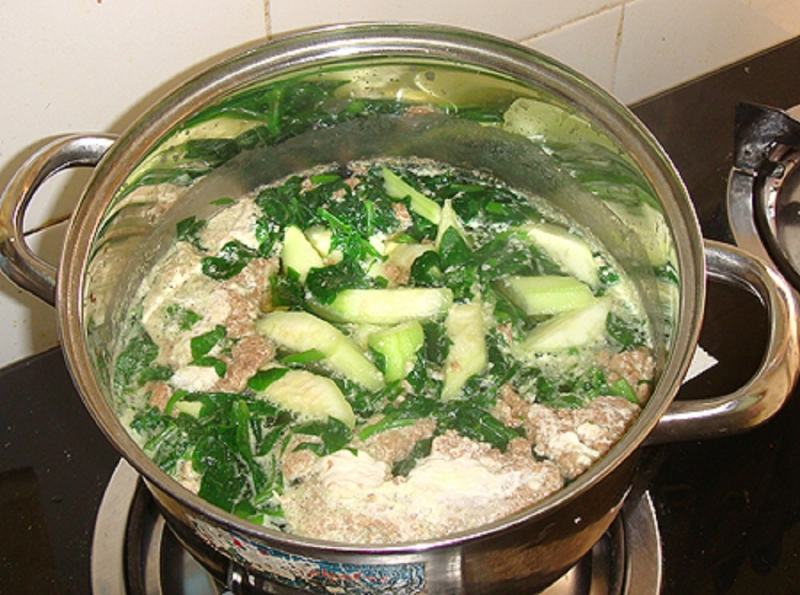Hibiscus crab soup is a rustic soup that helps cool down the summer heat. If you have the opportunity to come to Ninh Binh in the summer, you will have the opportunity to enjoy this attractive soup. In large restaurants, you can ask the staff to prepare this dish.
Hibiscus crab soup tastes like jute jute crab soup but is fragrant, sweet and cool. When chewing, the vegetable does not feel a bit harsh like crab soup cooked with jute vegetables but melts right at the tip of the tongue, very delicious. A bowl of this 10,000 VND soup, when eaten with eggplant, is both delicious and very refreshing, cooling in summer days.

Source: Collected internet.
Eight UNESCO world heritage sites stretch across Vietnam. Each place offers interesting perspectives on local life and majestic natural beauty. The Imperial Citadel and Hue mausoleums take you back to the Nguyen Dynasty full of ups and downs. Hoi An ancient town was once a bustling meeting point for ships and traders around the world. Throughout other provinces and cities, you will encounter ancient relics, poetic scenes, and vivid pieces that create the picture of Vietnamese heritage.
According to the ups and downs of the nation's history, Vietnamese customs and practices are constantly being innovated according to social trends. One of the oldest and most influential customs in history is the custom of chewing betel. This is a custom that dates back to the Hung King period and originates from the legend of Trau Areca and this custom has become a typical image of the brotherhood and love between husband and wife of Vietnamese people. Not only the custom of chewing betel, Vietnam also has another custom that was born in ancient times, which is the custom of welcoming the new year, also known as Tet - traditional Tet.
Located on the banks of Ka Long, the border river between Vietnam and China, Xa Tac Temple, Mong Cai City, Quang Ninh Province, is not only a place to worship and practice folk cultural beliefs of residents. This place also has significance as a cultural milestone, affirming the sacred sovereignty of the Fatherland. Recently, this hundreds of years old historical and cultural relic was recognized by the Ministry of Culture, Sports and Tourism as a National relic because of its unique values....
Hang Market (Hai Phong) was formerly the market of an ancient village called Du Hang (17th-18th centuries). The Du Hang village area was formerly agricultural land and a traffic hub, so Hang market became a place to meet, exchange, and buy and sell plants, animals, and farming utensils. The urbanization process spread to the suburbs, so today Hang Market is located entirely in the inner city, in Du Hang Kenh ward, Le Chan district, Hai Phong city. Even though many years have passed, the customs of exchanging agricultural goods of c